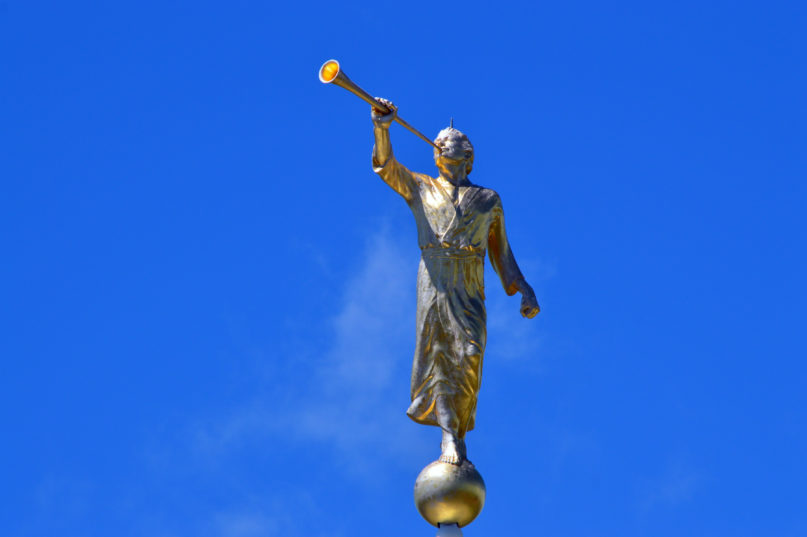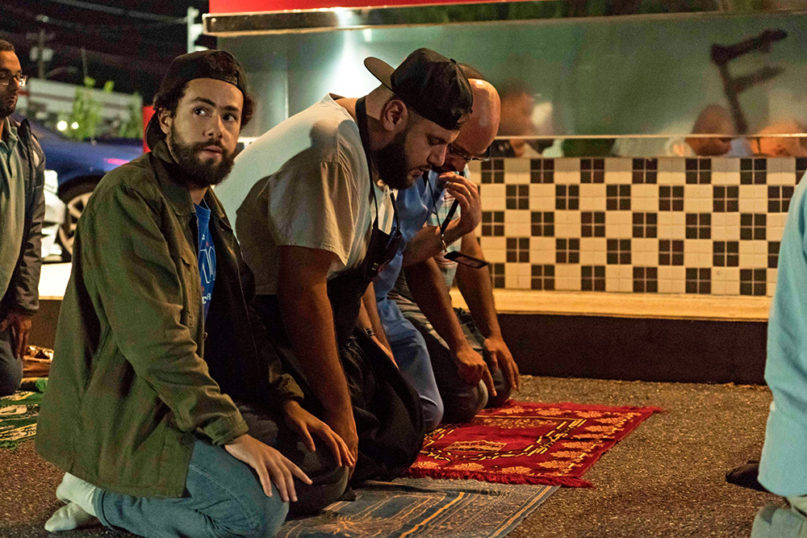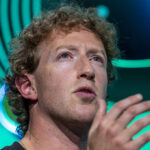(RNS) — Earlier this summer, I was in Salt Lake City on production for “Undivided,” a planned new TV show about American religions that I’m hosting. In Salt Lake I met with Latter-day Saints, known widely as Mormons — a term that some view as pejorative. Some were queer, and some were Black, and many of these church members shared their stories of being doubly marginalized: first as religious minorities historically rejected by their fellow Americans, and then by people from their own community.
Many Latter-day Saints of all stripes shared the strangeness of their position, seeing themselves as part of the American tapestry, yet never being fully accepted by the broader American society. A few mentioned how hard it was to be objects of American fascination with LDS culture.
As if to prove their point, The New York Times published two articles while I was in Utah about the Latter-day Saints: one on the hit reality show “The Secret Lives of Mormon Wives,” and a second about a newly approved religious undergarment that ran on the front page of the print edition.
Both were examples of quality journalism, neither misinforming readers nor misrepresenting the truth. Both brought interesting and important aspects of their stories to light. And yet, I found myself reflecting on what one person said to me about life for people in the church. “It’s almost like Americans are obsessed with us and what makes us weird. And I get that. But I wish people would actually get to know us.”
This point landed for me, in part because I saw my own views change as I sat with members of the church and heard about what their lives were like. I joined a queer LDS affinity group for dinner and learned about some of the challenges they navigated, and listened to them explain why they remain committed to their faith. I attended a service led by Latter-by Saints of color and talked to them about what they find frustrating about their religious institutions and what they find beautiful about them.
I’m grateful that the church’s support for our production opened some doors for us to present a wider view of the LDS community than outsiders typically see. And further, I’m grateful to the numerous individual Saints who shared vulnerably and honestly about their experiences and faith journeys. Those stories complicated my assumptions about the LDS community, and I’m sure they will for our audiences as well.
Through all of these discussions, I reencountered a lesson that life has taught me many times over: People are not who you assume them to be, and no one fits a textbook definition. To truly get to know one another and experience our shared humanity, we have to meet one another where we are and ask questions about what’s important to us.

An angel Moroni statue sits atop a temple of The Church of Jesus Christ of Latter-day Saints. (Photo by Erika Wittlieb/Pixabay/Creative Commons)
A scholar of religion who comes from a minority religious experience, I’ve long advocated understanding any faith by trying to understand the people who practice it first. Even I forget that sometimes, letting my own biases and assumptions get in the way. As I look at how religion is dividing the United States, I feel the divide firsthand as a member of the Sikh community that is often targeted in bigotry, and I see a real urgency to this.
What would it take for us to see one another for the complex human beings that we are, rather than for the stereotypes that dominate our collective understandings?
A first step is to recognize how low our faith fluency is in the United States. That gap often plays out in media as misrepresentation and erasure. Why is it the case that for most Americans, our primary cultural touchpoints for Latter-day Saints is a Broadway musical comedy or a salacious reality show? Wouldn’t we be so much better off if we balanced those stories out with other portrayals that truly reflected the texture and diversity of the LDS community?
Similarly, how is it that not a single TV show or movie that I can share centers the Sikh community, who practice the world’s fifth largest religion? Our cultural ignorance has had violent consequences, from racist mobs rounding up and attacking Sikhs within the first few years of their arrival in the U.S., to white supremacists massacring Sikhs as they prayed in more recent years.
I’m not suggesting that Hollywood draw its next Brad Pitt or Julia Roberts from Sikh America. But a modicum of representation would go a long way in introducing the rest of America to the community and seeing its members as human beings who deserve dignity and respect as much as everyone else.

Ramy Youssef, left, stars in “Ramy.” (Photo by Barbara Nitke/Hulu)
A handful of shows have broken through precisely because they treat faith as real and complex. “Ramy,” a Hulu series about a Muslim millennial born and raised in New Jersey, did an impeccable job of capturing what life looks like for a son of Muslim immigrants. It didn’t exoticize religion or treat it as a set of rules that everyone follows perfectly. Instead, it depicts religion as I have known it — as an aspect of a complex human identity, one that offers all kind of tensions and questions and funny situations, for better and for worse.
I was reminded of “Ramy” as I sat among Latter-day Saints of all skin colors and ethnic backgrounds in Salt Lake. None of those contexts appeared in encyclopedia entries on the LDS church. And yet, they are the church in real life.
Because of shows like “Ramy,” audiences are increasingly sophisticated enough to see through overly simplistic stories. I love Buddhist history and teach courses on it. Still, I’d be the first to admit that people don’t want to read textbooks about Buddhism. We want to know who Buddhists are, what their lives are like. Audiences are hungry for authentic human stories with meaning, identity, joy and the real-life struggles people face, including challenges to mental and emotional health. Creators and producers would do well to consider faith as a visible storytelling tool for advancing these themes.
A next frontier in inclusive, emotionally resonant storytelling — and what we’re trying to present in “Undivided” — is honest, noncaricatured portrayals where faith is more than a plot device. I’m ready for a world in which we tell the stories of everyday people like the ones I met in Utah. What I learned from them challenged my assumptions and opened my heart, creating enough space for me to connect with people I would have never connected with otherwise.
And isn’t that exactly what we need in our country right now?



